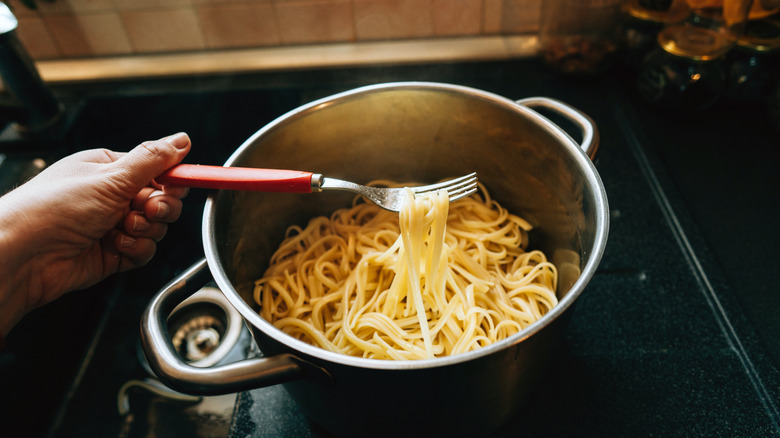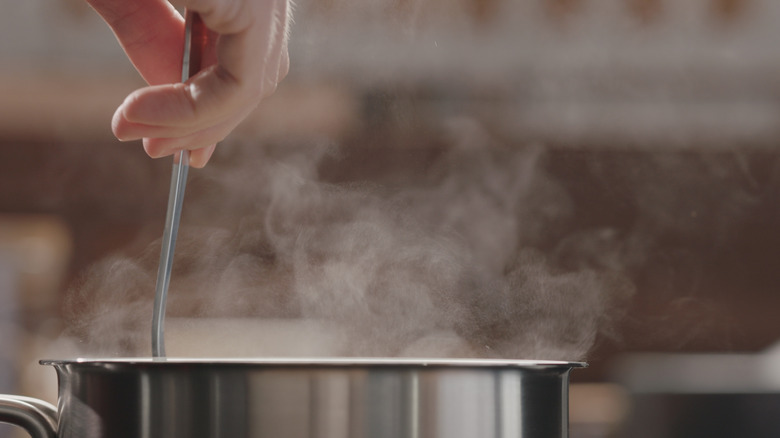Do You Really Need To Wait Until The Water's Boiling To Add Pasta?
We may receive a commission on purchases made from links.
Spaghetti, penne, rigatoni (the best pasta shape?), farfalle, giant fusilli — pasta comes in all shapes and sizes, making it one of the most versatile carbs out there. Whether it's dressed up, like in a fancy restaurant, or dressed down, using whatever is in your kitchen, it's difficult to make a pasta dish that isn't both filling and satisfying. Undoubtedly, when you cook pasta, it's the same routine: Bring water to a boil, salt it, and then deposit the starchy stuff. But can you actually change up the order and put the pasta into cold water first?
You can add pasta before the water is boiling, but with some caveats. First, the method: Put your pasta in the cold water and set it on high heat on your stove, stirring it regularly. When it starts to boil, turn the heat to low and put a cover on the pot. To time it, subtract one or two minutes from the cook time given on the box, starting when the pot starts to boil.
Now, the caveats: This method really only works if you're boiling your pasta in a medium-sized pot, like a 2- or 3-quart saucepan. Second, it should only be performed with short pastas, like penne or cavatappi, not long stringy pasta, like linguine or angel hair. And finally, don't try this technique with fresh pasta.
Pros and cons of the cold water method
In addition to these caveats, there are pros and cons for putting your pasta in cold water before bringing it to a boil. On the positive side, you can save yourself a minute or two, since you won't have to wait for the water to come up to a boil before your pasta starts absorbing it. You'll also use less energy, whether that's electric or gas, because you won't have it on for as long. Also, because you're boiling your pasta in a more confined space, you'll create a super dense, starchy water that is perfect to add to your dish while cooking to help thicken the sauce.
Still, there are some pitfalls to not following the traditional way of boiling pasta, including less absorption of salt into your spaghetti since the salt won't dissolve as quickly in cold water. There's also the fact that, until you familiarize yourself with the cold water process with every type of pasta you use, it can be easy to overcook it and end up with mush instead of well-formed noodles.

